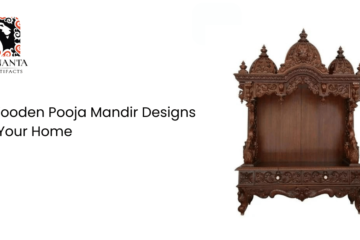Immerse yourself in the vivid hues and rich traditions of traditional Indian crafts as you step into the enchanting world of Indian swinging. Every swing embodies a different narrative that showcases the rich cultural fabric of India, whether it’s through elaborate carvings or paintings. In this post, we will explore the centuries-old skill of making these beautiful and practical works of art.
For many generations, Indian swings have been a source of peace and tranquility in Indian households. The sheer level of skill required to create these swings is mind-boggling. Intricate carvings and embellishments of motifs and designs are hand-applied by skilled artisans using methods that have been handed down through many generations.
Incredible craftsmanship is evident in every Indian swing, be it crafted from wood, metal, or even wicker. Their use of bright colors in decoration is a reflection of the country’s affinity for visually appealing goods.
Come explore with us the intriguing history of Indian swings and the people who made them. Learn about the cultural importance of these swings in Indian heritage while you marvel at their creativity and workmanship.
Indian swing styles
The diverse patterns and designs of Indian swings are a reflection of the rich cultural legacy of each region. The wicker jhoola, the metal chain jhoola, and the hardwood jhoola are three of the most common varieties of swings.
Wooden Jhoola Swing
In Indian households, you’re most likely to see a wooden jhoola swing. Crafted from durable teak wood, these swings showcase elaborate carvings and ornamentation. One popular option for outdoor areas is the wooden jhoola, which is sometimes adorned with colorful blankets and cushions.
Metal Chain Swing
The iron jhoola, or metal chain jhoola, is a contemporary variation on the classic Indian swing. The wrought iron swings showcase elaborate patterns and designs. For a more modern aesthetic, many choose the metal chain jhoola, which is used in outdoor areas and gardens.
Cane Swing
One choice that is both lightweight and versatile is the wicker jhoola, which is also called the cane swing. You might see these woven cane swings in bedrooms and living rooms rather often. For a more free-spirited style, many opt for the wicker jhoola.
Different regions & styles of Indian swings need different materials
The weather-resistant and long-lasting teak wood is a popular choice for wooden swings. Wrought iron, the material used to make metal swings, is durable and impervious to the elements. The woven cane used to make wicker swings is both lightweight and bendable.
Indian swings are typically decorated with elaborate patterns and bright hues.
To make the swings more colorful, we use paints and dyes. To make them more comfortable and stylish, we use textiles and cushions. When decorating an Indian swing, it is usual practice to utilize natural materials like silk and cotton.
Traditional handicraft techniques
Indian swings are works of art due to the meticulous care that goes into their creation. Intricate carvings and embellishments of motifs and designs are hand-applied by skilled artisans using methods that have been handed down through many generations.
To make a wooden jhula, one must first choose the appropriate wood, shape it using a saw, and then carve elaborate patterns and decorations into the wood. Afterwards, the jhula is given a good polish and adorned with paint or other decorations.
Wrought iron is bent and welded into the required form to create a metal chain jhula. After that, elaborate patterns and decorations are painted onto the metal jhula.
Weaving cane into the correct shape is the first step in creating a wicker jhula. Cushions and fabrics are added as decorations. Because of their pliability and portability, wicker jhulas are great for use indoors.
Determinants of Indian fluctuations by region
The many regional variants of the Indian swing are a reflection of the rich cultural diversity seen in India. The cultural history of a place is reflected in the swings’ distinctive style and design, which varies from region to region.
Rajasthani swings are renowned for their ornate carvings and decorations, which draw inspiration from the cultural heritage of the area. Handcrafted from coconut wood, these swings from Kerala showcase intricate designs and intricate carvings. Gujarati swings are typically adorned with vibrant textiles and cushions and crafted from bamboo.
The cultural and symbolic importance of Indian swings
For many Indians, the sound of an Indian swing is a symbol of joy and festivity. It is said that the gentle swaying of the swings not only helps to relax the body and soul but also brings the family closer together.
Swinging on a jhula is a common depiction of Lord Krishna in Indian mythology. According to legend, goddess Radha also utilized a swing to establish a connection with Lord Krishna.
Conclusion
Every swing embodies a different story, woven into the rich cultural fabric of India, from the elaborate carvings to the vivid hues. The skill of Indian swing handicraft has a long history of transmission from one generation to the next. Traditional crafts, like Indian swings, are in danger of extinction due to the proliferation of mass-produced furniture. We should celebrate the history and aesthetic value of Indian swings since these benches serve a purpose beyond mere seating. They are symbols of a long and storied cultural tradition that has been preserved through the years.




